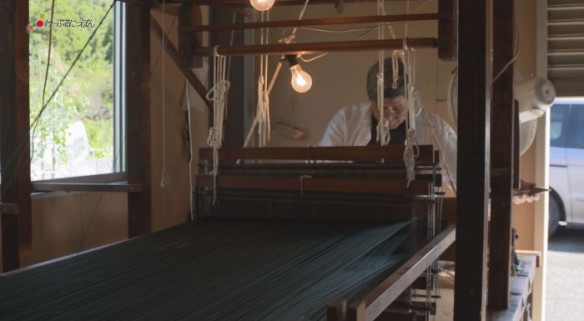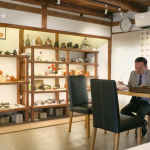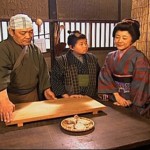TRAVEL

Ornamental Silk Apron for Sumo Wrestlers -Oozumo Kensho-Mawashi-
TRAVEL
2015
30 mins Episode(s): 1
english
Japanese




Hirokuni Ohno is one of the very few Hakata textile weavers left in the world and has a workshop in Kokura Town in Kitakyushu City. He creates ornamental silk aprons for Sumo wrestlers to wear in the ring. The apron is approximately 70 centimeters wide and over 7 meters long, and the silk fabric has a history of over 770 years. This documentary will focus on the rare and beautiful Hakata textile weaving technique, and the lone master craftsman who dedicates his life to preserving its tradition.
Click here to preview this episode!
Part of the "Artisans of Japan Series"!
Click here to preview this episode!
Part of the "Artisans of Japan Series"!
Customers who watch this video also watch
-
Hungry Hoppers - Pigging out around Japan
2010 24 minsThis crazy and entertaining food show hosted by Yo Oizumi, a Japanese rising actor/star, follows three comedic guys known as the "Piggy Family" as they travel around Japan seeking out the local hidden delicacies that Japan's world-renowned cuisine has to offer. Watch as the guys travel in their minivan, named...more details -
Light of My Life
 2000 Nominated as one of the Best 8 Dramas in Asia at the International Emmy Awards. Yuko, indecisive about her future, submits a blank report about her college plans. As punishment, she spends summer vacation helping her mother deliver meals to the elderly. She meets Gansan, a stubborn old man whom...more details
2000 Nominated as one of the Best 8 Dramas in Asia at the International Emmy Awards. Yuko, indecisive about her future, submits a blank report about her college plans. As punishment, she spends summer vacation helping her mother deliver meals to the elderly. She meets Gansan, a stubborn old man whom...more details -
Tokoname Pottery, hoping to re-establish a long lost relationship- Tokoname City, Aichi Prefecture
30 minsTokoname pottery is one of Japan's six oldest stonewares. Chang from Shanghai settled in Tokoname after he was captivated by the beauty of Tokoname teapots. Now he runs a shop for Chinese tourists and he visits China for various exhibitions to promote the pottery. This documentary tells the history of...more details -
Ryori Mukashi-Banashi (Tales of Edo Cuisine)
2013 45 minsThis program takes you back in time to the Edo era of the 17th and 18 centuries, by recreating actual recipes of the time for the present. You not only learn how to cook the meals, but also the historical background behind each dish. However, this is no ordinary cooking...more details



